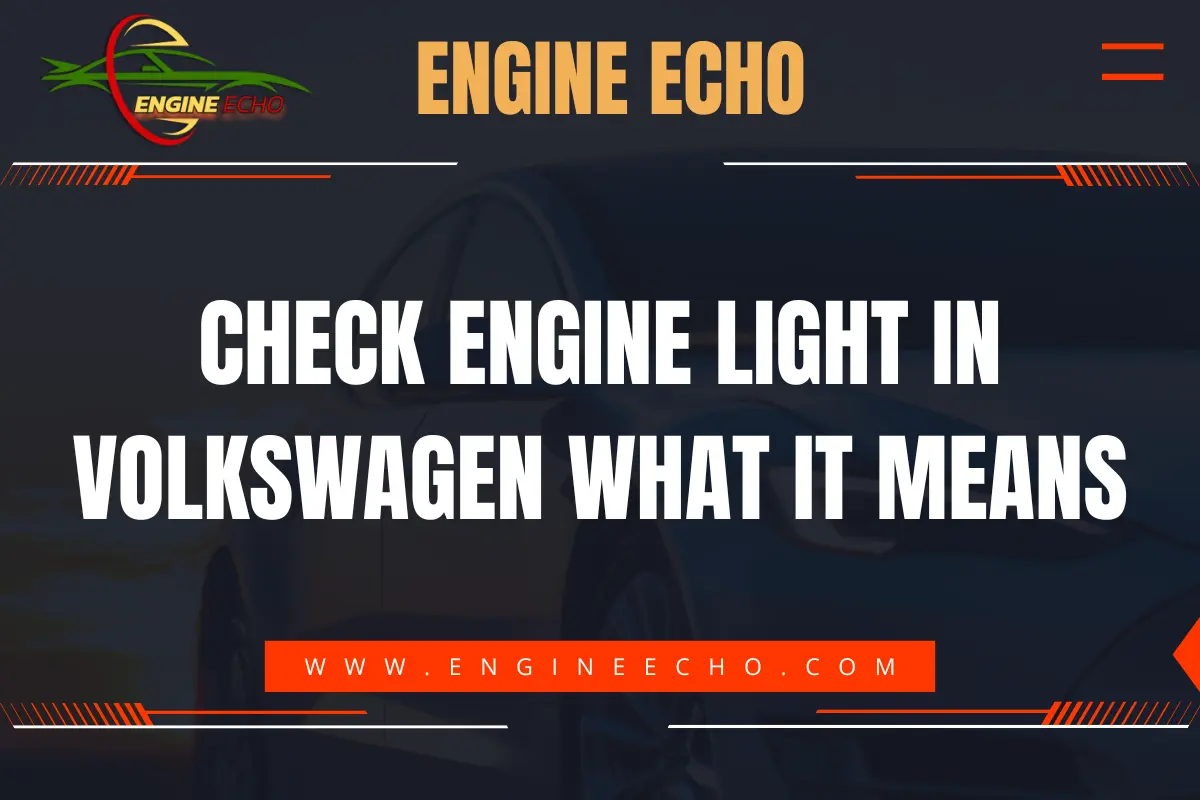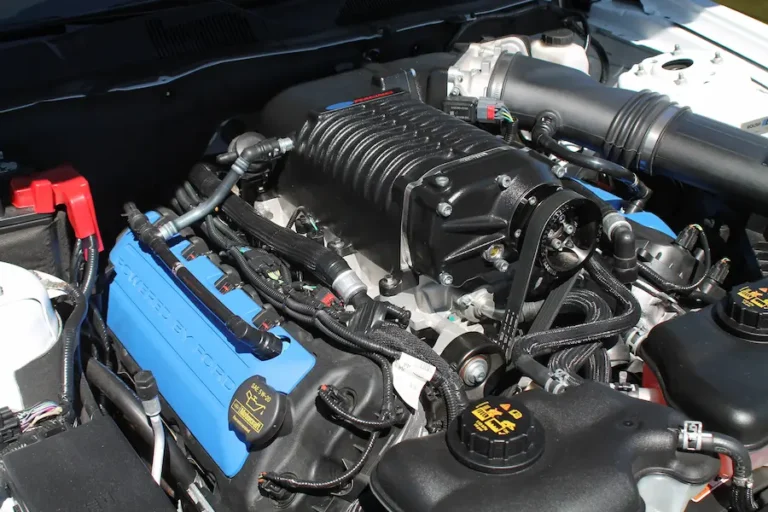Check Engine Light in Volkswagen: What It Means

Key Takeaways:
- The check engine light in Volkswagens serves as an early warning signal for various vehicle issues.
- Common causes include problems with the gas cap, oxygen sensor, or catalytic converter.
- Diagnostic tools like an OBD-II scanner can help identify the problem based on specific fault codes.
- Simple fixes, such as tightening the gas cap, can be done at home, while other issues require professional attention.
- Ignoring the check engine light can lead to more severe damage and expensive repairs in the long run.
Introduction
If you drive a Volkswagen, you’ve probably seen that dreaded check engine light pop on before. Trust me, I’ve been there—it’s easy to freak out, but more often than not, it’s something minor. The trick is to avoid panicking and to understand what’s really going on with your car. In this article, I’ll break down the usual culprits behind the check engine light, how to figure out what’s wrong, and when you might need to call in the pros.
Common Causes for the Check Engine Light in Volkswagen
After dealing with my fair share of check engine lights, I’ve come to learn that certain issues seem to pop up more than others in Volkswagens:
Gas Cap Issues
- A loose or damaged gas cap is a surprisingly common reason for that light to come on. It happened to me after a road trip—I was gearing up for an expensive repair, but turns out the gas cap just needed tightening.
- Fix: Simply tighten the gas cap or replace it if needed, and you’re good to go.
Oxygen Sensor Failure
- The oxygen sensor measures how much oxygen is in your car’s exhaust and adjusts the fuel mixture accordingly. When it goes bad, your car might start guzzling gas.
- Signs: A sudden drop in fuel efficiency or rough idling. I had this issue once, and though my car was still running, I noticed I was stopping at the gas station far more often than usual.
Catalytic Converter Problems
- The catalytic converter helps reduce harmful emissions. If it fails, you could see a drop in performance and an increase in emissions. I remember driving with sluggish acceleration for a few weeks before I realized the converter was the problem.
- Symptoms: Reduced acceleration, worse gas mileage, and a sulfur-like smell coming from your exhaust.
Mass Airflow Sensor Issues
- This sensor measures how much air is coming into your engine and helps the car’s computer maintain the right fuel-to-air ratio. When mine started acting up, I noticed my car hesitating while accelerating.
- Signs: Rough idling, hesitation during acceleration, or even stalling.
Ignition Coil and Spark Plug Problems
- If your car misfires, it’s probably due to bad ignition coils or spark plugs. I had this happen once, and let me tell you, driving felt like a bumpy rollercoaster.
- Symptoms: Rough idling, trouble starting, or a general decline in engine performance.
How to Diagnose a Check Engine Light in Volkswagen
You don’t always need a mechanic right away. In fact, with a little know-how, diagnosing the problem can be surprisingly simple:
Using an OBD-II Scanner
- OBD-II scanners are total game-changers. You just plug them in, and they give you the lowdown on what’s going on with your car—no guesswork, just facts.
- Recommendation: If you don’t own one yet, it’s a small investment that can save you time and money by telling you exactly what’s wrong.
Understanding Diagnostic Trouble Codes (DTCs)
- Once you plug in the OBD-II scanner, it’ll spit out a code. Don’t worry if you’re not a car expert—these codes are easy to look up.
- Common Codes:
- P0420: Catalytic converter efficiency below threshold.
- P0171: System too lean (fuel-air mixture issue).
- P0300: Random or multiple cylinder misfires.
Volkswagen-Specific Check Engine Light Codes
Volkswagens have their fair share of quirky codes. Over the years, I’ve seen some that seem to show up more often than others:
- P0442: Evaporative emission control system leak (likely a small leak).
- P2187: System too lean at idle—this one gave me trouble a few months back.
- P0172: System too rich (too much fuel in the mix).
What to Do When the Check Engine Light Comes On
When that light flickers on, here’s how I handle it:
Initial Steps
- First, I always check the gas cap. You’d be surprised how often it’s just that. Make sure it’s tightly secured or replace it if it looks worn.
When to Continue Driving and When to Stop
- If the light’s steady, you’re probably fine to drive for a bit while you figure it out. But if it’s flashing, don’t mess around—pull over and call for help.
DIY vs. Professional Repair: When to Seek Help
I’ve been working on cars for years, and while I enjoy doing some of the fixes myself, there are times when it’s better to let a professional take over.
Simple Fixes You Can Handle at Home
- Replacing the gas cap or spark plugs are jobs you can do in your driveway. I’ve done this several times, and it’s a quick, satisfying fix.
- Cleaning the mass airflow sensor: With a little care, you can clean it yourself using mass airflow cleaner.
Issues Requiring Professional Attention
- Catalytic converter replacement: Trust me, you don’t want to try this one at home. The costs and complexity of replacing it are better left to a pro.
- Oxygen sensor failure: While it’s possible to replace an oxygen sensor yourself, I usually leave it to the professionals because it requires precision.
The Impact of Ignoring the Check Engine Light
I once ignored the light for weeks, figuring it was nothing serious. Spoiler: it wasn’t nothing. I ended up with a clogged catalytic converter and a hefty repair bill.
- Short-term effects: Poor fuel economy and engine performance.
- Long-term damage: Major components like the catalytic converter or engine can be damaged if the light is ignored for too long, which gets expensive fast.
Preventing the Check Engine Light from Coming On
Regular Vehicle Maintenance
- Regular maintenance is key. I’m religious about oil changes and inspections, which have saved me from bigger issues down the road.
- Tip: If you keep up with routine services like replacing air filters and spark plugs, you’ll prevent many of the problems that trigger the check engine light.
Monitoring Fuel and Air Systems
- Keep an eye on fuel quality and ensure the air filters and airflow sensors stay clean. I make a habit of checking these after every long road trip.
Volkswagen Models Prone to Check Engine Light Issues
Some Volkswagen models seem more prone to issues. I’ve had friends with Jettas and Passats who have seen that light far too often. Based on my experience, here are the common culprits:
- Volkswagen Jetta (2014–2018)
- Volkswagen Passat (2012–2019)
- Volkswagen Tiguan (2018–2021)
Case Studies: Real-Life Examples of Check Engine Light Issues
Case 1: 2015 Volkswagen Jetta
- Problem: Oxygen sensor failure.
- Solution: Replaced the sensor, and the car’s performance went back to normal.
Case 2: 2018 Volkswagen Passat
- Problem: Clogged catalytic converter.
- Solution: Had the converter replaced, which solved the sluggish acceleration problem.
Case 3: 2020 Volkswagen Tiguan
- Problem: Faulty mass airflow sensor.
- Solution: Cleaned the sensor myself, and the check engine light turned off.
Costs Involved with Resolving Check Engine Light Issues
Minor Fixes
- Gas cap replacement: $10–$30.
- Spark plug replacement: $100–$150.
Major Repairs
- Catalytic converter replacement: $1,000–$2,500. I had to shell out for this once, and it wasn’t fun.
- Oxygen sensor replacement: $150–$500.
Conclusion
Bottom line? Don’t ignore that check engine light. It might seem like no big deal at first, but trust me, letting it slide can turn into a much bigger (and more expensive) headache. Take care of your car, stay on top of regular maintenance, and when that light comes on, run a quick diagnostic. It could save you from a major headache (and wallet ache) down the road.
Frequently Asked Questions (FAQs)
Q1: What should I do first when the check engine light comes on in my Volkswagen?
A: Start by checking the gas cap. Tighten it if needed, and if the light persists, use an OBD-II scanner to check for trouble codes.
Q2: Can I keep driving if my check engine light is on?
A: If the light’s steady, you’re usually okay to drive for a bit. But if it’s flashing, stop immediately and get help.
Q3: How much does it cost to repair a check engine light issue in a Volkswagen?
A: Simple fixes like replacing a gas cap or spark plugs can cost under $150, while major repairs, like catalytic converter replacements, can exceed $1,000.
Q4: Can I reset the check engine light myself?
A: Yes, after fixing the issue, you can reset the light with an OBD-II scanner. However, if the issue isn’t resolved, the light will come back on.
Q5: How can I prevent the check engine light from coming on?
A: Regular maintenance, using quality fuel, and keeping your airflow sensors and filters clean will help prevent check engine light issues.
Thanks for checking out this article on EngineEcho.com! Hope you found this article: "Check Engine Light in Volkswagen: What It Means" helpful! If you liked it and want to dive into more car engine topics, head over to our homepage. There's always something new to discover in the world of engines. Enjoy your reading journey!
Check out our previous article: What to Do When Your Engine is Faulty






